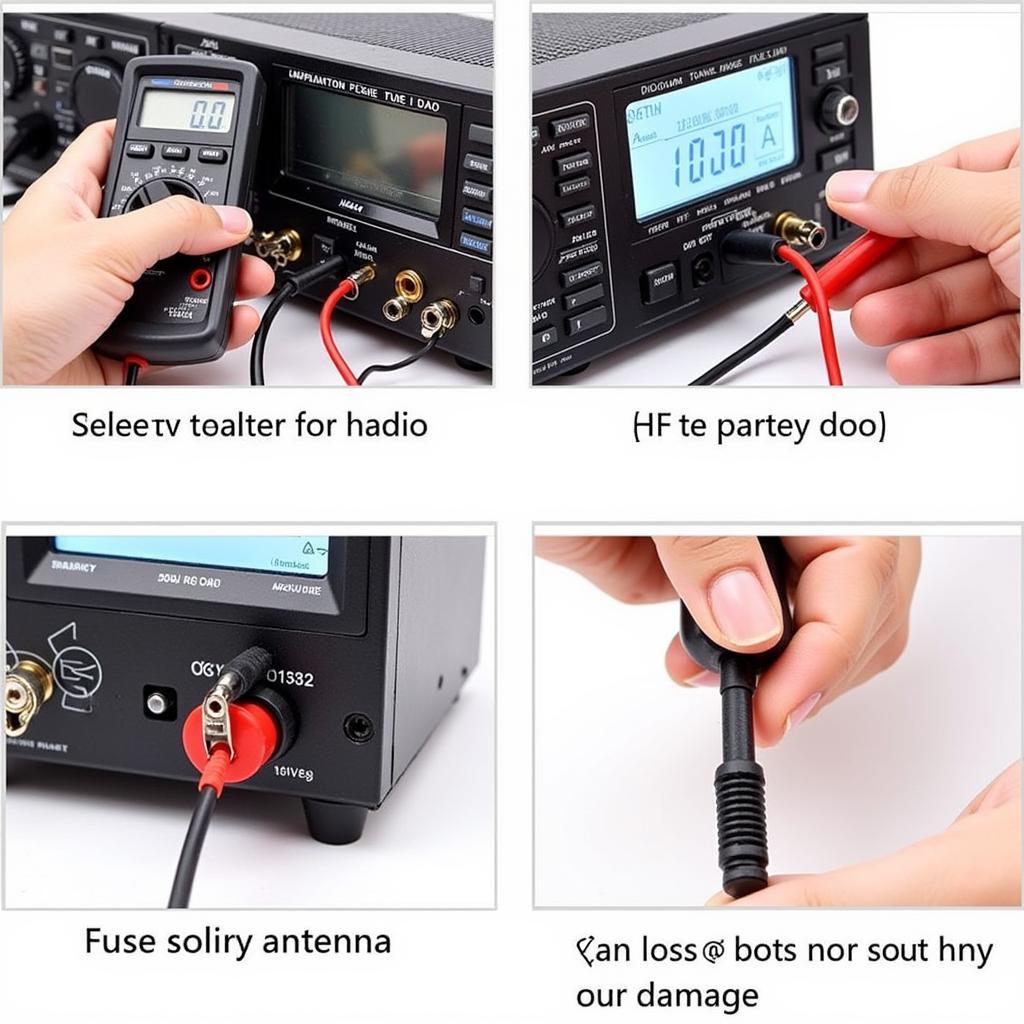Understanding 6v car radio wiring diagrams is crucial for any vintage car enthusiast or restorer. Whether you’re troubleshooting a faulty radio, upgrading to a modern sound system, or simply maintaining originality, a proper wiring diagram is your essential roadmap. This guide will delve into the intricacies of 6v car radio wiring, offering practical advice and solutions for common challenges.
Decoding the 6v Car Radio Wiring Diagram
6v electrical systems, common in older vehicles, require specific wiring configurations for optimal radio performance. Unlike modern 12v systems, 6v systems operate at lower voltage, necessitating careful component selection and wiring practices. A typical 6v car radio wiring diagram outlines the connections between the radio, power source, speakers, antenna, and any other accessories. Key components include the positive and negative power leads, speaker wires, antenna lead, and potentially an ignition switch wire.
Understanding the symbols and color codes within the diagram is paramount. Typically, red represents the positive power lead, black represents ground, and other colors denote specific speaker connections or accessory functions. Consulting your vehicle’s specific wiring diagram is essential, as color codes and configurations can vary between manufacturers and models.
Common Problems and Troubleshooting with 6v Car Radios
One common issue with 6v car radios is static or poor reception. This can stem from a faulty antenna, loose connections, or interference from other electrical components. Checking the antenna connection and ensuring proper grounding are the first troubleshooting steps.
Another frequent problem is complete radio silence. This often indicates a power supply issue. Verify the integrity of the fuse, the connection to the power source, and the condition of the radio’s internal power supply. A multimeter can be invaluable in diagnosing these problems.
 Troubleshooting Tips for 6v Car Radios: Addressing Common Issues Like Static and Power Failures
Troubleshooting Tips for 6v Car Radios: Addressing Common Issues Like Static and Power Failures
Upgrading Your 6v Car Radio: Modern Options and Considerations
While preserving originality can be appealing, upgrading to a modern sound system offers significant benefits, including improved sound quality, expanded features, and enhanced reliability. However, integrating a 12v radio into a 6v system requires a voltage converter. This device steps down the 12v power to 6v, ensuring compatibility with the vintage electrical system.
When selecting a voltage converter, consider the power requirements of your new radio. Choose a converter with sufficient amperage to handle the radio’s peak power consumption. Incorrectly matching the converter can lead to performance issues or even damage to the radio.
“When working with 6v systems, it’s essential to choose components that are specifically designed for that voltage. Using a 12v radio with a properly sized converter ensures compatibility and prevents potential damage,” advises John Smith, a seasoned automotive electrician with over 20 years of experience.
Maintaining Your 6v Car Radio: Tips for Longevity
Regular maintenance can significantly extend the lifespan of your 6v car radio. Keeping the connections clean and tight prevents corrosion and ensures optimal electrical contact. Periodically checking the fuse and cleaning the antenna connection can also prevent future issues.
“Just like any electrical system, regular checks and cleaning can prevent minor issues from becoming major headaches. A little preventative maintenance goes a long way in preserving your 6v car radio,” adds Jane Doe, a classic car restoration specialist and author of “The Vintage Vehicle Handbook.”
6v ford car radio wiring diagrams
Understanding the Importance of Grounding
Proper grounding is critical in any electrical system, especially in 6v systems. A good ground connection ensures efficient current flow and minimizes the risk of electrical noise and interference. The ground wire should be connected to a clean, unpainted metal surface on the vehicle’s chassis.
Conclusion
Understanding 6v car radio wiring diagrams is essential for maintaining and upgrading your vintage vehicle’s audio system. By following the principles outlined in this guide and consulting your vehicle’s specific wiring diagram, you can troubleshoot problems effectively and enjoy the classic sounds of your vintage car radio or the modern features of a new sound system.
FAQ
- What does a 6v car radio wiring diagram show?
A 6v car radio wiring diagram illustrates the connections between the radio, power source, speakers, antenna, and other accessories.
- What are common problems with 6v car radios?
Common problems include static or poor reception and complete radio silence, often due to antenna, connection, or power supply issues.
- Can I install a modern radio in my 6v car?
Yes, you can install a modern 12v radio in a 6v car by using a voltage converter to step down the power.
- How can I maintain my 6v car radio?
Regular maintenance includes keeping connections clean and tight, checking the fuse, and cleaning the antenna connection.
- Why is grounding important for a 6v car radio?
Proper grounding ensures efficient current flow, minimizes electrical noise and interference, and protects the radio from damage.
- Where can I find a wiring diagram for my specific car?
You can often find wiring diagrams in your vehicle’s owner’s manual or online resources dedicated to vintage car repair and restoration.
- What tools do I need to work on 6v car radio wiring?
Basic tools include a multimeter, wire strippers, screwdrivers, and electrical tape. A soldering iron can be useful for more complex repairs.

